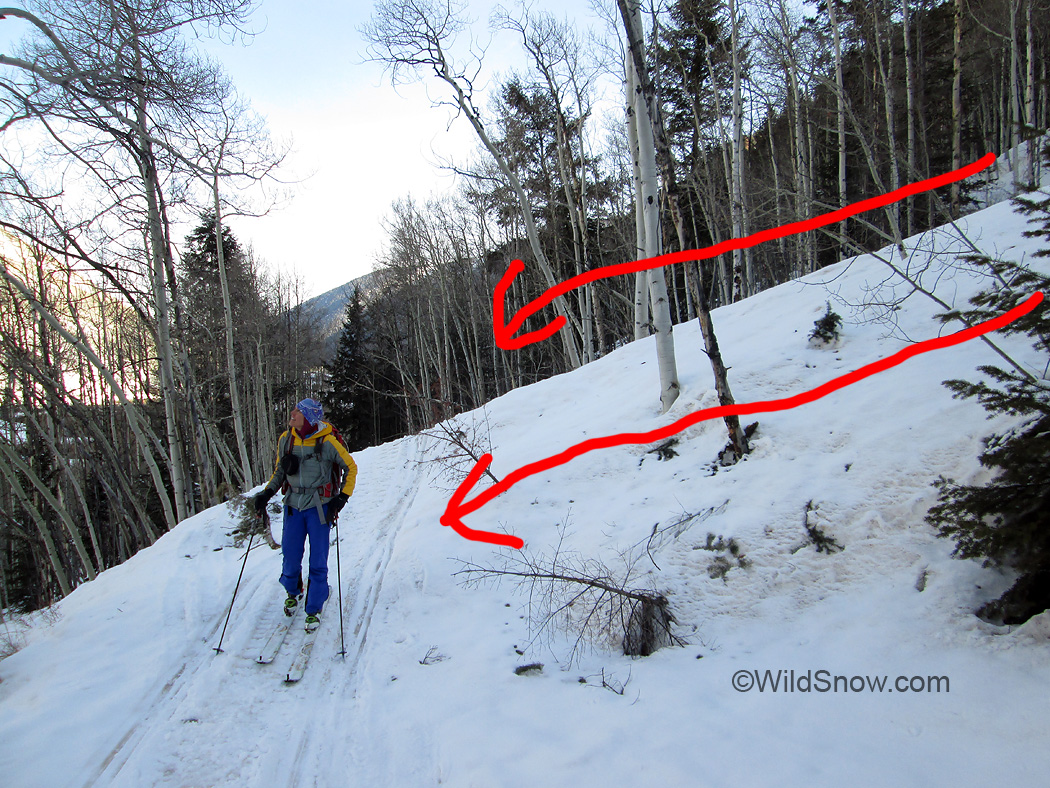
During extreme avalanche danger the lower portion of the approach trail is crossed by quite a few avalanches.
As winter sinks deeper into the mountains and the snowpack layers stack higher, decision making in avalanche terrain is a particularly good thing to take stock of. Where do fall on the spectrum of risk averse to fully risky? Take this avalanche safety quiz to find out.
INSTRUCTIONS: Please think briefly about each question and click your best answer. Be brutally honest, the process and results are totally anonymous. Please answer every question and guess if necessary, otherwise your results will not be valid and will skew our database. Everything is 100% anonymous.
The idea: this is a general evaluation of how at-risk you are when recreating in avalanche terrain. This is NOT a quiz to check your knowledge level. It also closely based on anecdotal experience. The quiz is oriented to people who travel in avalanche terrain and have some knowledge of avalanche dynamics and safety. Your result will be numeric — from a low number of around 500 up to 5,000. Your score will be one of 5 levels within that range. For details about each of the 5 score levels, see the info included with quiz results. Ultimately, it provides an exercise in self reflection, an important element of making sound decisions in the backcountry.
We have no function for you to view a summary of your answers. If you’re concerned about your score, show the quiz to an experienced avalanche safety educator and ask them about the answers.
Also, please be advised that backcountry ski touring in avalanche terrain is inherently risky. Thus, the quiz will tend to score higher rather than lower. For example, the question about how many days a winter you backcountry ski is important to the overall score. But everything works together in the quiz and more of the good cancels out the bad. (Note, once you complete the quiz an explanation of scores and answers will be available.)
While most of the WildSnow backcountry skiing blog posts are best attributed to a single author, some work well as done by the group.
